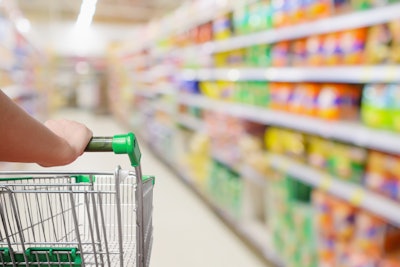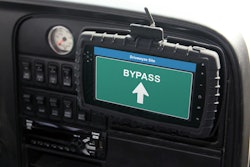
Consumers weren’t exactly lining up to buy their groceries online before the pandemic. There’s always a catalyst for change, and in this case, months locked indoors and the looming threat of another year (or more) of shelter-in-place orders seem to have done the trick.
Online grocery shopping and delivery services have been around for more than a decade, though they hardly moved the needle of consumer interest until recently.
Even Amazon couldn’t gain a significant foothold in the industry, despite nearly endless resources. It wasn’t until late in 2019 that Amazon removed Fresh’s $15 monthly service fee and promised 1- to 2-hour deliveries that consumers started to pay attention. Yet even that didn’t make significant waves, not when compared to what we’re seeing now, at least.
Saying grocers are chomping at the bit to get in on the gold rush would be putting it lightly. For more than a decade, grocers big and small have tried their hands at online delivery services, and with middling success. The tide started to turn with the rise of on-demand services.
So, what’s a brick-and-mortar grocer to do in times like these? Adapt.
Play to your strengths
For all the convenience offered by online grocery delivery, shopping is still a personal experience. Food is intrinsically linked to who we are, and the idea of a stranger picking it isn’t one that we’ve become accustomed to just yet. Picking the best avocados, for example, involves great care. Scrolling and clicking will never match the experience of a visual inspection and a gentle squeeze to test for ripeness.
There’s also the issue of cost. Whether true or not, online grocery shopping is still perceived as expensive. With delivery surcharges, markups and even monthly service fees, the average consumer doesn’t want the added expense. And, while costs have fallen significantly as competition heats up, the perception remains. Add the often inconvenient delivery windows, mandatory minimum purchase amounts and the dreaded “Plan B” experience — when your selected product isn’t available and your shopper must select an appropriate alternative or skip the item altogether — and you’ll see just a few of the reasons consumers didn’t flock to online shopping before the pandemic.
For a brick-and-mortar grocer to survive post-pandemic, it needs to play to its strengths. And, its strengths aren’t new and innovative, but a return to what it was always good at—the experience offered, the personal attention and the tactile sensation of touching, feeling and smelling the things that you’ll later consume.
Delight your customers
While a return to the personalized experience will certainly delight customers, it does little to enhance the bottom line once they’re in the store. For that, it’s time to look at inefficiency in all its forms, from spoilage to long waits at checkout.
One method that’s seen glowing reviews is that of hydroponic produce grown in-store in vertical gardens. Woolworths was the first to debut the concept with a “living lettuce” section that allows customers to pick their lettuce right out of the water — thus reducing spoilage and offering the freshest produce to customers.
7Fresh is a utopia of technological innovation, offering hands-free shopping carts that follow shoppers around and magic mirror technology that displays information about products, such as their point of origin and ideas on how to cook them.
Multiple grocers, including Israeli chain Osher Ad has sought to remove one of the biggest headaches of the shopping experience by eliminating the checkout process. Instead of rolling through a checkout lane, customers can scan products in their cart. Upon exiting the store, they roll the cart beneath an automated sensor that audits the entire purchase in just two or three seconds.
But, if you’re looking for the future of the grocery experience, customers won’t be scanning anything to avoid checkout. In the United States, Amazon Go stores feature no checkout stands or clerks, instead relying on in-store cameras and sensors that track what customers pick up and charge them as they walk out of the store.
Empower your employees
A great customer experience is contingent on a dedicated and empowered workforce. Embracing technology for efficient and aligned workers like a good communications platform or interactive mobile-first intranet is a great way to not only create a healthy work culture, but also sets the scene for higher levels of productivity and employee retention.
The benefits don’t stop there. In reality, a good work culture has a major fiscal impact on a business. According to Gallup, organizations with good work culture overtake the competition by 147% in earnings per share. Happier workers are motivated to go above and beyond for the customer, identify and solve problems more often and create an environment that customers want to shop in.
For grocery workers in particular, a mobile intranet is a great way to give employees direct access to company communications directly from their smartphones. Company-wide posts, team-specific messages and chats and HR applications help streamline day-to-day operations in an efficient and central way.
Deskless workers have been kept out of the loop until recently, but mobile adoption is connecting these distributed teams like never before, which is crucial in today’s changing grocery environment.
What’s next?
The future of brick-and-mortar grocers relies on their ability to adapt to the growing threat of online shopping by deploying new technologies that enhance the employee experience while playing to their strengths as a sensory and tactile event.
The industry has seen innovative chains roll out some extraordinary new technology that offers a good start, but the truth is that it’s simply not enough. The longer the pandemic rolls on and the longer we’re all stuck in quarantine, the more ingrained online grocery shopping becomes in our existence.
And, changing consumer behavior has never been easy.













